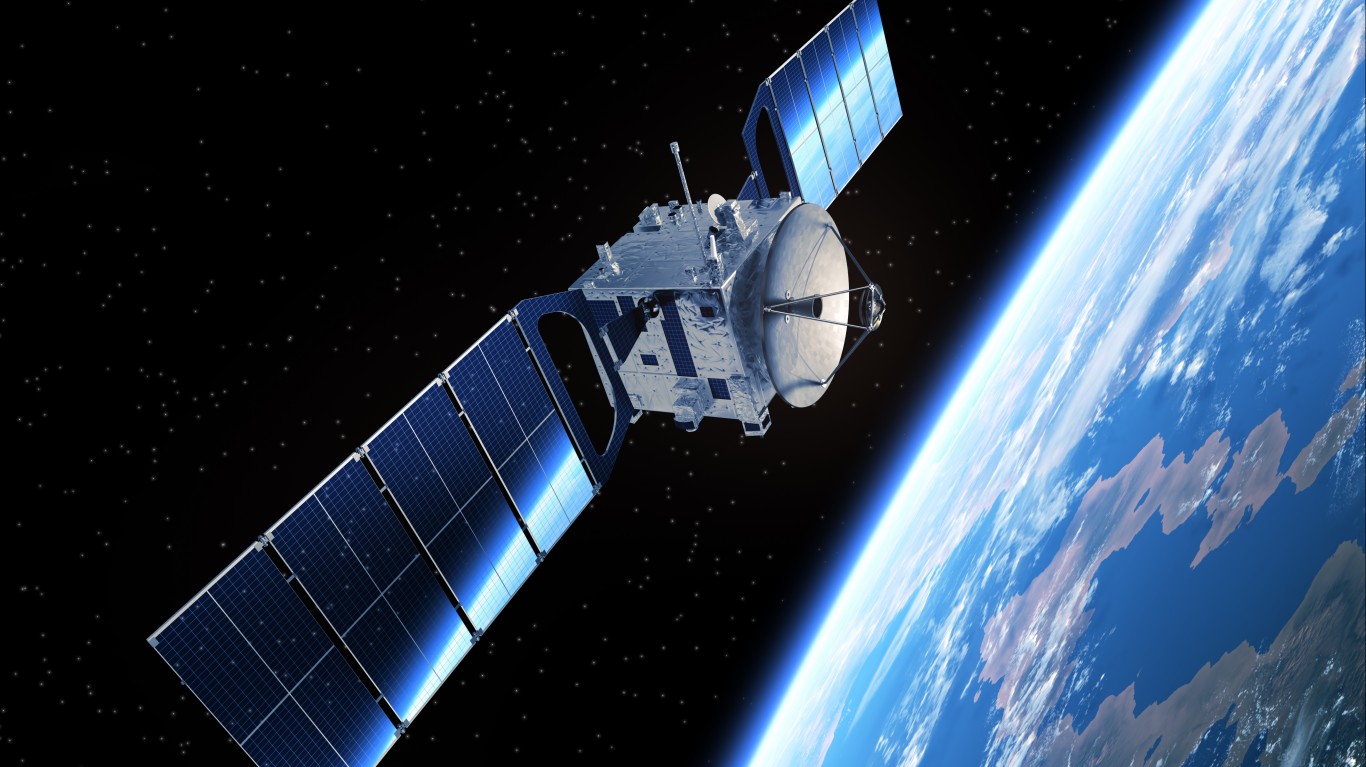

There’s no question that 2019 was a good year for defense contractors, and 2020 looked all set to continue the story. The U.S. fiscal year 2021 defense budget proposal totaled around $706 billion, virtually flat with current fiscal year spending.
Among defense stocks, Northrop Grumman Corp. (NYSE: NOC) was an analysts’ favorite after posting a share price gain of nearly 43% last year. Other big winners last year were United Technologies Corp. (NYSE: UTX), up 44%, and Lockheed Martin Corp. (NYSE: LMT), up nearly 53%.
Northrop stands to pocket $2.8 billion in fiscal 2021 for continuing work on the company’s B-21 bomber. By 2028, the Pentagon expects to spend almost $50 billion developing a B-21 bomber capable of delivering atomic bombs.
Northrop also is the odds-on favorite to win a $60 billion contract to replace the Air Force’s intercontinental ballistic missile force. That contract has not been formally announced yet. The Pentagon’s Ground Based Strategic Deterrent program was being contested by Northrop and Boeing Co. (NYSE: BA) until Boeing dropped out last July.
Boeing complained that the competition was unfairly skewed in Northrop’s favor, but an appeal was denied. Another contestant, Lockheed Martin dropped out of the bidding for the program in 2017. Spending in fiscal 2021 is penciled in at $1.5 billion.
A Small Program With a Potentially Huge Future
Last week, Northrop was awarded a contract from the Defense Advanced Research Projects Agency (DARPA). The deal was to provide a first-of-its-kind robotics payload for a robotic vehicle that will be used to service satellites in geosynchronous Earth orbit. Called the Robotic Servicing of Geosynchronous Satellites (RSGS) program, DARPA’s fiscal 2020 budget includes $64.6 million to fund continuing work on the program.
In announcing the award, Joseph Parrish, program manager for RSGS in DARPA’s Tactical Technology Office, said:
The RSGS program has made steady progress since it was established in 2016. The completion of the Payload Critical Design Review in summer 2019 and the delivery of key fight hardware items such as the first manipulator arm keeps us on course for launch, targeted in 2023. RSGS would be the first concrete step toward a transformed space architecture with revolutionary capabilities.
For a company that hauled in $33.8 billion in 2019 revenues, $65 million is a rounding error. According to a database maintained by the Union of Concerned Scientists, there are 2,218 satellites currently orbiting around the Earth. More than a quarter of the satellites (562) are positioned in GEO (geosynchronous/geostationary) orbit more than 22,000 miles above the equator.
Last month, a Northrop Mission Extension Vehicle (MEV) successfully docked with an Intelsat communications satellite that has been in service for 19 years. The goal was to overhaul the satellite, extending its life by five years. Intelsat would have had to retire the satellite in a few months without the successful MEV docking.
Why All This Matters to Northrop
Northrop acquired space and defense contractor Orbital ATK for $7.8 billion in 2018. The former company’s Space Logistics group, now part of Northrop, has the DARPA contract. Unlike a former contestant for the work, privately held Maxar Technologies, Northrop’s deep pockets are not threatened by the cost-sharing contract DARPA required.
Northrop now has an inside track on providing robotic services for the other 561 GEO satellites currently orbiting the earth. At least for the near future, the company will be the only game in town for satellite owners like Intelsat.
The best part is that the federal government has picked up a sizable piece of the development cost. If the contract with DARPA follows the usual practice, the federal agency will recover no more than the amount it spent to help develop the program. Once the RSGS program is fully operational, the lion’s share of the profits goes to Northrop and other private companies that choose to compete with Northrop. DARPA, and the federal government, get a hearty handshake.
Northrop Grumman stock traded up nearly 12% for the year on January 30. On March 9, the stock traded down 8.6% for the year. The concern among investors is that the federal government will slow spending on some defense programs to pay the expected high costs to combat the coronavirus outbreak now spreading across the United States.
Take This Retirement Quiz To Get Matched With An Advisor Now (Sponsored)
Are you ready for retirement? Planning for retirement can be overwhelming, that’s why it could be a good idea to speak to a fiduciary financial advisor about your goals today.
Start by taking this retirement quiz right here from SmartAsset that will match you with up to 3 financial advisors that serve your area and beyond in 5 minutes. Smart Asset is now matching over 50,000 people a month.
Click here now to get started.
Thank you for reading! Have some feedback for us?
Contact the 24/7 Wall St. editorial team.